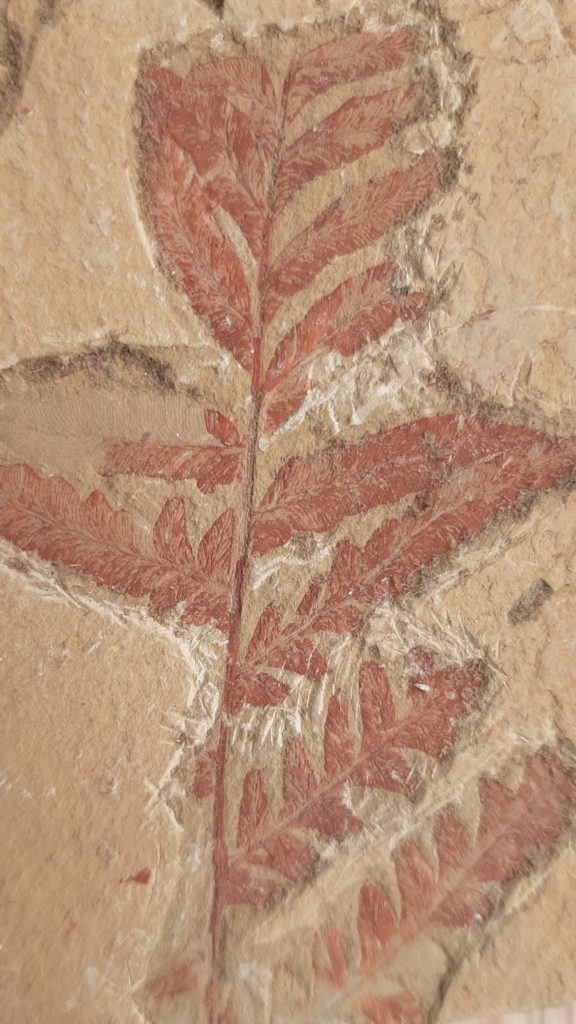 Having previously given some account of plant structure it will be convenient to explain here how plants become fossilized.
Having previously given some account of plant structure it will be convenient to explain here how plants become fossilized.
IMPRESSION FOSSIL

Entire plants or fragments may become covered with silt, say, in a riverbed and as a result of the silt being compressed to form rock, a mark or impression may remain.
If the rock is subsequently split open, a beautiful impression of a leaf, for example, may be seen. This is an impression fossil.
In some cases, virtually all of the original plant material may have decomposed. In others, the plant material may have been reduced to carbon which remains as a black deposit to form a coalified compression fossil. In the latter, some of the original plant structure may still remain and yield useful information.
PERMINERALIZATION
Many plant fossils are preserved by becoming permeated with mineral solutions which subsequently harden and turn to stone. From the point of view of the student of fossil plants this is a most important process of fossilization because minute details of cells are frequently preserved to perfection. The plant tissue is said to be permineralized. It is calcareous if the fossil finally becomes calcium carbonate or silicified if it was permineralized by a siliceous solution.
AMBER
A much rarer form of preservation is in amber. Many people will be familiar with the way in which insects may become trapped in amber. Small plant parts such as tiny flowers and pollen may also be found along with the insects. Amber originates from the sticky resin exuded by trees, mainly conifers, which subsequently hardens in the soil.
OIL or TAR
Also rare is preservation in oil or tar. Both substances are known to preserve plant parts.